Australian half penny coins by the years
1911
Mint: London
Mint mark: None
Mintage: 2,832,000
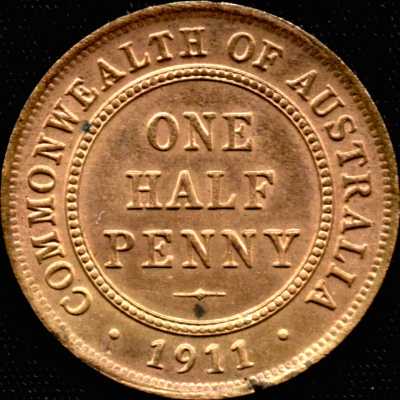
1912
Mint: Heaton & Son
Mint mark: H below lower scroll
Mintage: 2,400,000
The 1911 halfpenny was struck at the Royal Mint in London but in 1912 the task of minting Australian halfpennies was sub-contracted to the private mint facility of Heaton & Son in Birmingham, just as it was for the pennies of that year. In contrast to the pennies, the same reverse die was used for both years.
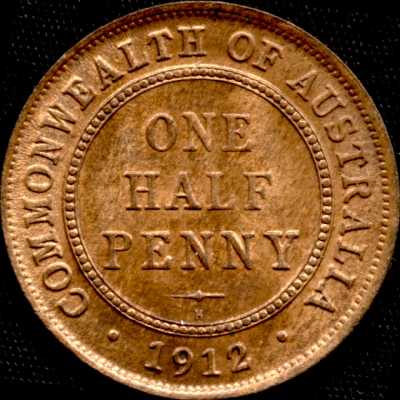
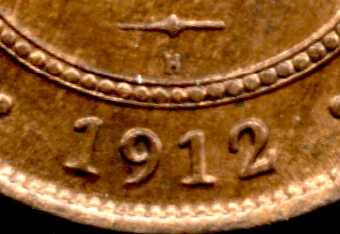
1913
Mint: London
Mint mark: None
Mintage: 2,160,000
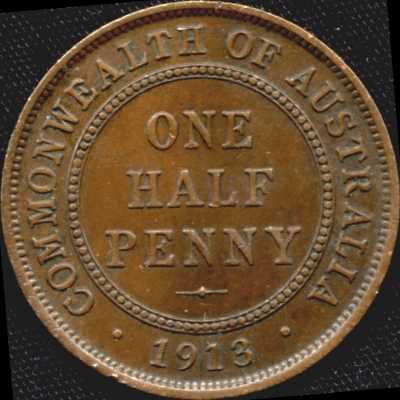
1914
Mint: London
Mint mark: None
Mintage: 1,440,000
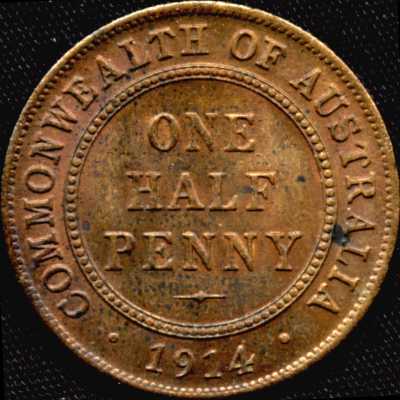
Mint: Heaton & Son
Mint mark: H above date
Mintage: 1,200,000
The same master dies were used for the 1914 London and Birmingham (Heaton) strikes and the only difference between the issues is the presence of the H mint mark on the Heaton coins.
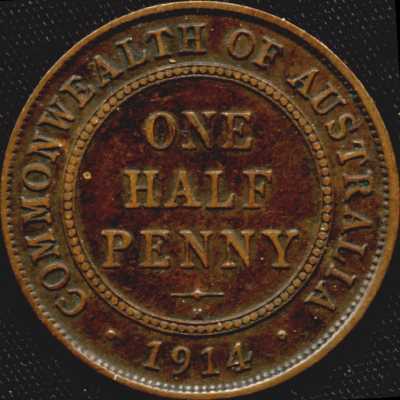
1915
Mint: Heaton & Son
Mint mark: H above date
Mintage: 720,000
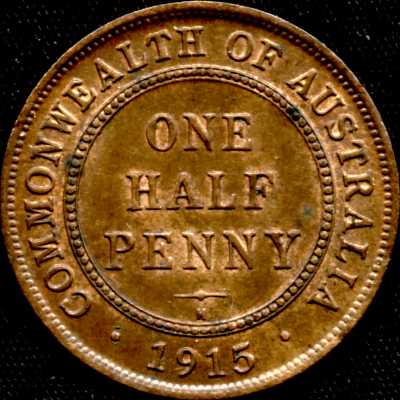
1916
Mint: Calcutta
Mint mark: I above date
Mintage: 3,600,000
With the Australian mints not yet prepared to strike silver and bronze coins
and with the Royal Mint occupied with wartime commitments, the task of striking
Australian bronze coins was contracted out to the Calcutta branch mint.
In contrast to the pennies, new master tools were not prepared for Calcutta.

1917
Mint: Calcutta
Mint mark: I above date
Mintage: 5,760,000
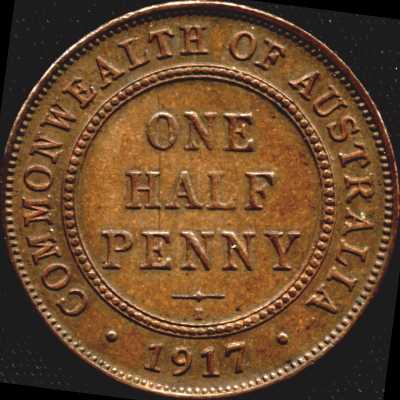
1918
Mint: Calcutta
Mint mark: I above date
Mintage: 1,440,000
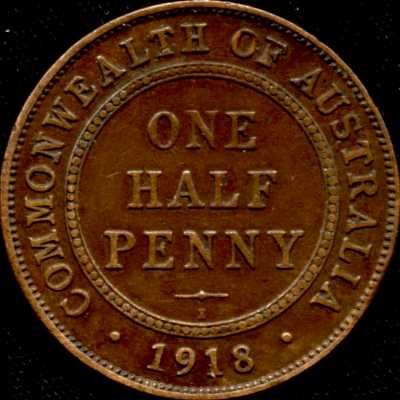
1919
Mint: Sydney
Mint mark: None
Mintage: 3,326,400
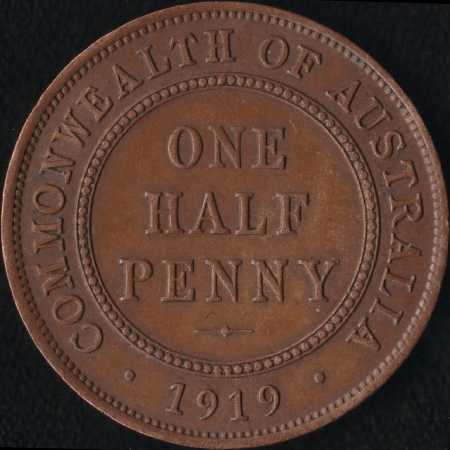
1942
Australian halfpennies dated 1942 were minted in Melbourne, Perth and Bombay.
According to mint records the dies were sent to Bombay on 25th March 1942. The obverse
die was used throughout 1942 with the addition of a mint mark comprising an I below
the bust of George V but the reverse die sent from Melbourne was not used and a
new die was fabricated in India. This die was very similar to the Melbourne die
but had slightly different lettering and a different treatment of the kangaroo's
face. Also, the design was in somewhat lower profile than on the die supplied from
Melbourne. The majority of 1942 Bombay halfpennies were minted with this "type
C" die but a few were struck with yet another tool prepared in Bombay, the
"type D" reverse which featured tall denticles. The type D reverse was
used for all 1943 halfpennies minted in Bombay.
Numismatists have wondered why the Bombay Mint should have bothered to make its
own dies for the striking of Australian bronze coins in 1942 and 1943 when dies
were supplied from Melbourne. Writing in JNAA#8 Paul Holland says of the pennies:
These coins [1942 & 1943 pennies] display three distinctive new die types prepared
at the Bombay Mint. This in itself presents a minor mystery since dies were supplied
to the Bombay mint from Melbourne, but were apparently either lost or discarded
in favor of new obverse and reverse dies prepared locally.
We know for certain that those dies didn't get lost because all the tools were shipped
together and the halfpenny obverse was indeed used. My conjecture is that the coining
presses in Bombay were not adequate for striking the coins using the tools supplied
from Melbourne. Apparently the halfpenny obverse was acceptable but the halfpenny
reverse and both the penny designs were too deep for the mint's equipment to render
satisfactorily and the technicians at Bombay found it necessary to fabricate new
tools in lower relief to overcome the difficulty.
If this hypothesis is correct then the mystery is not why new dies were made in
1942, but why yet more new ones were made for the 1943 issues.
Mint: Melbourne
Mint mark: None
Mintage: 988,800
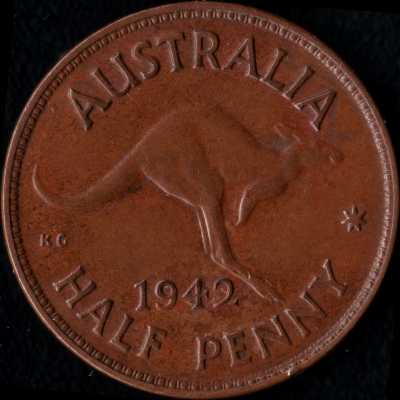
Mint: Perth
Mint mark: None
Mintage: 4,334,400
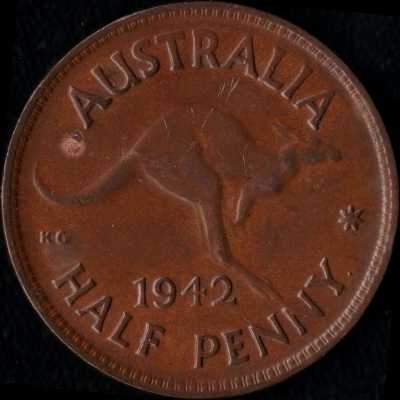
Perth issue. Dot after Y.
Mint: Bombay
Mint mark:
I below bust
Mintage: 6,000,006
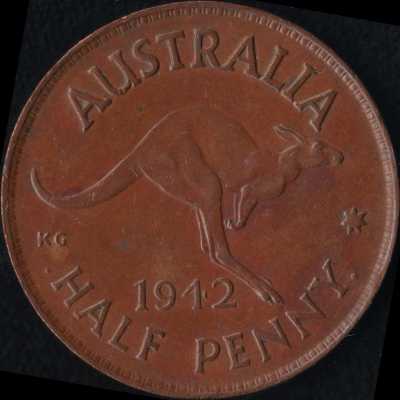
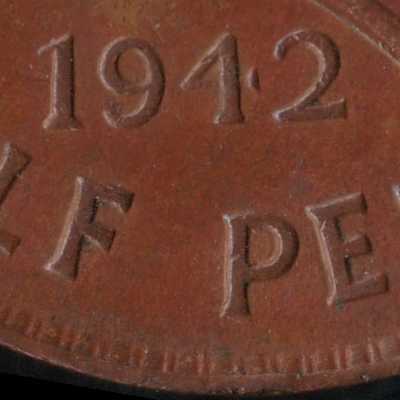
First Bombay issue. Dots before and after HALF PENNY.
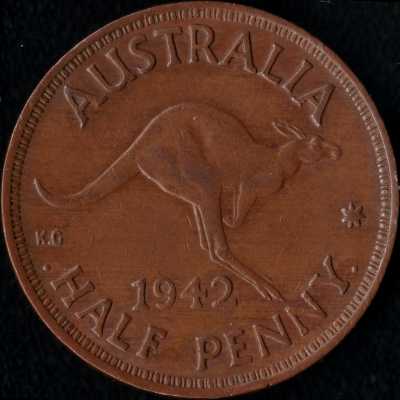

Second Bombay issue and precursor to the 1943 coin. Dots before and after HALF
PENNY.
1945
Mint: Perth
Mint mark: None
Mintage: 3,494,400
Australian halfpennies dated 1945 were minted in Perth. The coin occurs in two varieties, one with a dot after the Y in PENNY, the other without. Each is common.
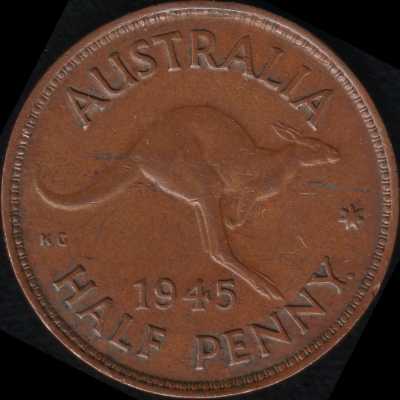
Dot after Y in PENNY
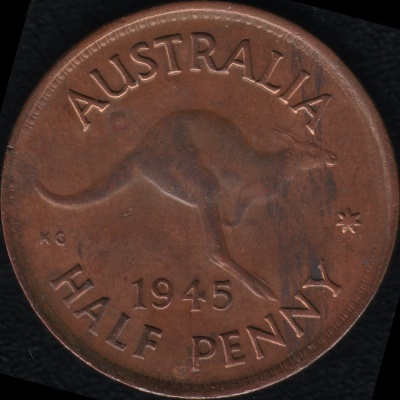
No dot.
1951
Mint: London/Heaton
Mint mark: PL
Mintage: 12,000,000
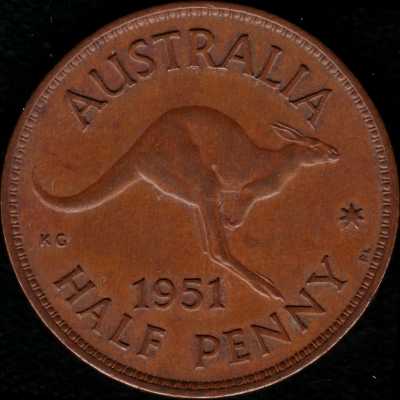
Mint: Perth
Mint mark: None
Mintage: 29,422,080
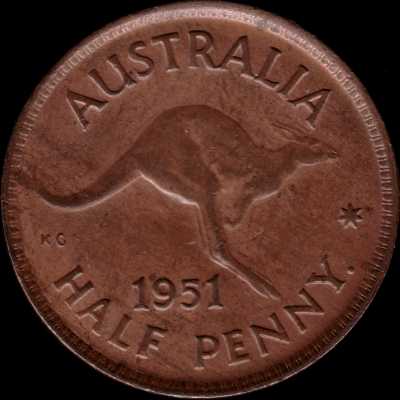
A dot after the Y.
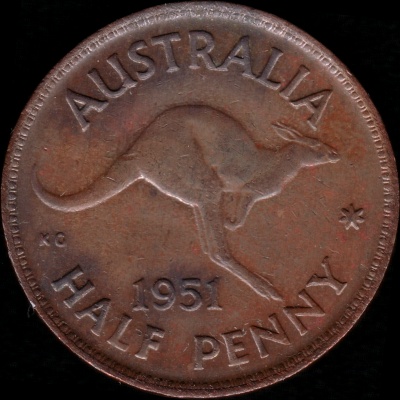
No dot - Scarce
Other Australian coins
Elizabeth II coins (1952-2022)

